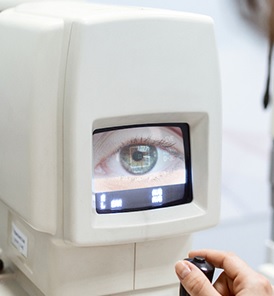Superior Oblique Myokymia Symptoms, Causes, Treatment
Superior oblique myokymia, often known as SOM, is a disorder that causes continuous twitching of the eyelids. One of the muscles that aid in the regulation of eye movement is known as the superior oblique. Myokymia means that muscles move on their own. The muscle around the eye starts to tighten, which can cause double vision or the feeling that a still object is moving up and down.
Eye movements can sometimes be evoked by having the patient move their attention from inferiorly and laterally to the center of their field of vision. However, a slit lamp examination may be normal because the frequency of episodes is unpredictable. Examination of the nervous system and eyes is normal otherwise.
SOM makes oscillations with low amplitudes (less than 4°) and high frequencies (up to 50 Hz). Patients with SOM can produce a "Honda sign" when a stethoscope is put over their blinking or "oscillating" eye. A sound resembling a motorbike engine is produced by the superior oblique tendon's rapid motions. There is usually no correlation between SOM and abnormalities in eyesight, iop, visual fields, or pupillary reflexes.

Symptoms
Superior oblique myokymia, often known as SOM, is an irregular eye movement condition marked by
- Rapid, rhythmic, monocular contractions of the superior oblique muscle
- Vertical and torsional microtremor of an eye.
- Monocular oscillopsia
- Vertical and torsional diplopia
- Tremors
Causes
It is unknown what causes SOM. It might be brought on by a weakening of the trochlear nerve at the nerve root exit point. A brain tumor, a cyst, or an absence of cerebrospinal fluid (CSF) between the nerve and the artery are the three most common causes of compression produced by the superior cerebellar artery.
Trauma may cause SOM, however, most individuals do not remember any prior trauma. Despite the fact that SOM has been linked to trauma and compression, there are certain patients who do not exhibit either of these etiological factors.
Treatment
Due to the unpredictability and varied time course of SOM, it is difficult to evaluate the effectiveness of existing medical therapy. These are the two primary reasons why there is no documented treatment for SOM. Treatment options include anti-convulsant drugs, beta-blockers, and surgery options.
Due to the difficulty in separating the superior oblique muscle from the other extraocular muscles, botulinum toxin injections may only offer short relief and have varying success rates. Due to the relatively low number of adverse effects, gabapentin is frequently used as a successful first-line treatment. However, the undesirable side effects of these medications make treatment more challenging.
Beta-blockers like propranolol and timolol have recently been identified as potential therapy choices due to their capacity to decrease the amplitude of blood pressure. This would alleviate the symptoms that were brought on by the vascular compression of the trochlear nerve.
 Reviewed by Simon Albert
on
September 01, 2022
Rating:
Reviewed by Simon Albert
on
September 01, 2022
Rating:











